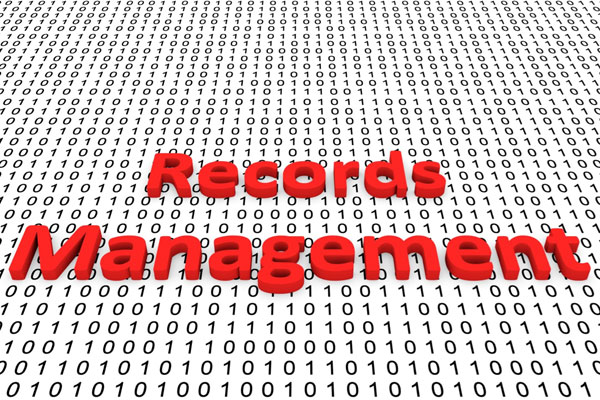 At last, we have hit the year that federal agencies are expected to fully complete their transition to managing records electronically. Per the National Archives and Records Administration (NARA) itself: “By December 31, 2019, all permanent electronic records in Federal agencies will be managed electronically to the fullest extent possible for eventual transfer and accessioning by NARA in an electronic format.”
At last, we have hit the year that federal agencies are expected to fully complete their transition to managing records electronically. Per the National Archives and Records Administration (NARA) itself: “By December 31, 2019, all permanent electronic records in Federal agencies will be managed electronically to the fullest extent possible for eventual transfer and accessioning by NARA in an electronic format.”
But that leaves us with only 12 months to meet an ambitious goal and deadline. How can you be sure to stay on track for success? NARA itself has identified the specific operational activities that agencies need to undertake if they are to successfully meet this mandate. Here’s everything your Action Plan 2019 needs to cover.
1: Prioritize and allocate resources.
If your agency does not already have sufficient resources –including budget, staff, and any tools or other resources needed –in place to carry out the work required, this step must come first. Without it, any initiative will fail.
2: Train records management staff.
Identify the people who will carry out records management activities and ensure they receive the training needed to handle the equipment, software, and processes required to manage documents electronically. Note that Designated Agency Records Officers will want to obtain NARA’s Federal Records Management Training certification.
3: Review records schedules.
As part of the transition, it is necessary to inventory and assess permanent records; this includes identifying any unscheduled electronic records. Then, you must prioritize the scheduling of any and all electronic records that qualify for permanent retention.
4: Consult stakeholders.
Virtually all government offices can potentially produce records that must be scheduled for permanent electronic records. That means you must consult with a wide array of records owners, as well as relevant Chief Information/Data/Technology Officers, to determine how infrastructure, technology, and processes need to be adapted to meet their needs and incorporate the records they produce.
5: Maintain systems.
The basic records requirement, as NARA writes, is that “agencies must maintain permanent electronic records for the duration of their retention periods.” That will require agencies to have the proper systems implemented and maintained in line with the universal Enterprise Resource Management requirements NARA issued in 2017.
6: Prepare for transfer.
Permanent electronic records must be exported and transferred to NARA. To be successful in this step, agencies must comply with NARA’s format and metadata requirements (available here).
7: Execute transfer.
The moment of truth will come when the staff in charge of agency records finally transfer permanent electronic records to NARA. This step is obviously critical, but it requires all previous steps to be executed in full before it can be successful.
8: Institute policies.
Of course, the transfer of data records is not one-time-only; and agencies will need to develop and institute policies to govern how electronic records are created, managed, and transferred on an on-going basis. Do not underestimate the scope of this step: policies are needed to cover everything from standard operating procedures through the addition of clauses into contracts with vendors and other third-parties to safeguard government-owned electronic records.
9: Evaluate program and processes.
No one expects perfection right away (or ever). Instead, it is critical that agencies periodically assess the strengths and weaknesses of their electronic records management and develop processes to resolve issues and make improvements as needed.
Get help.
Executing these nine steps – and along the way successfully synchronizing strategy, policy, workflows, and technology –is no small undertaking. Complicating the situation, the policies, procedures, and technologies required will be new to many agencies, whose core expertise and duties have little to do with electronic records. Outside partners with relevant expertise can prove invaluable to undertaking these initiatives successfully in order to meet the 2019 guideline. Don’t be afraid to ask for help!
For more information, read NARA’s “Criteria for Successfully Managing Permanent Electronic Records” report, or contact PSL directly.
About PSL
At PSL, we engineer smart solutions in the areas of Cybersecurity, Digital Records Services, Code Development, Cloud Computing and Technology Advisory Services. We seek to understand what goals our clients strive to achieve, preserve, avoid and eliminate. We are a purpose-driven organization that values excellence in everything we do. We succeed only when our clients do too. For more information, please visit https://www.penielsolutions.com or email info@penielsolutions.com.

